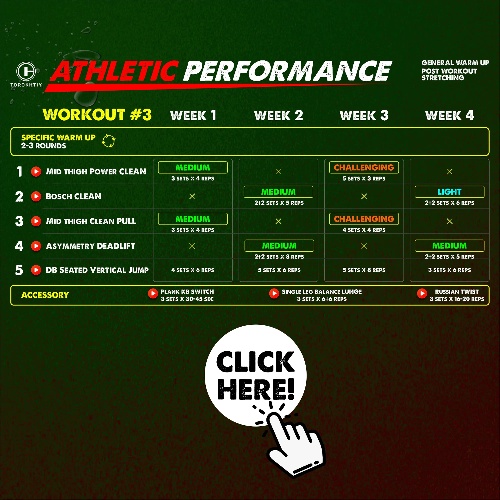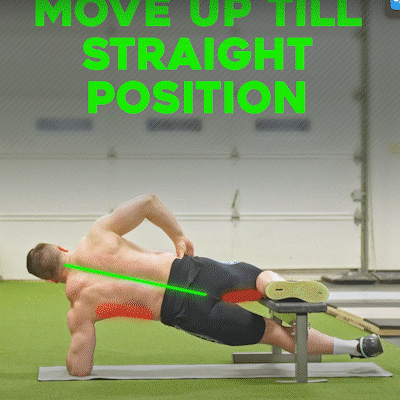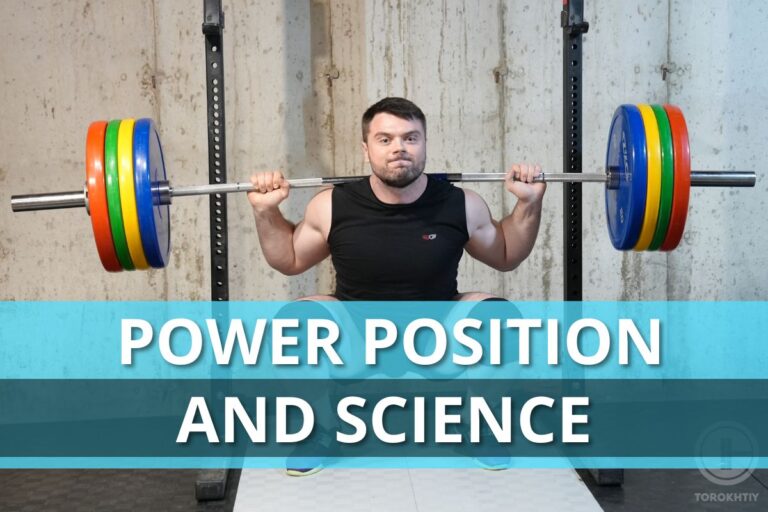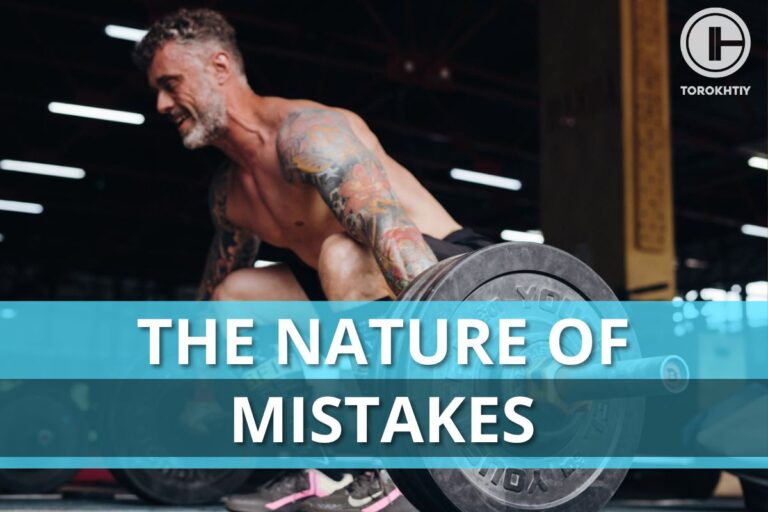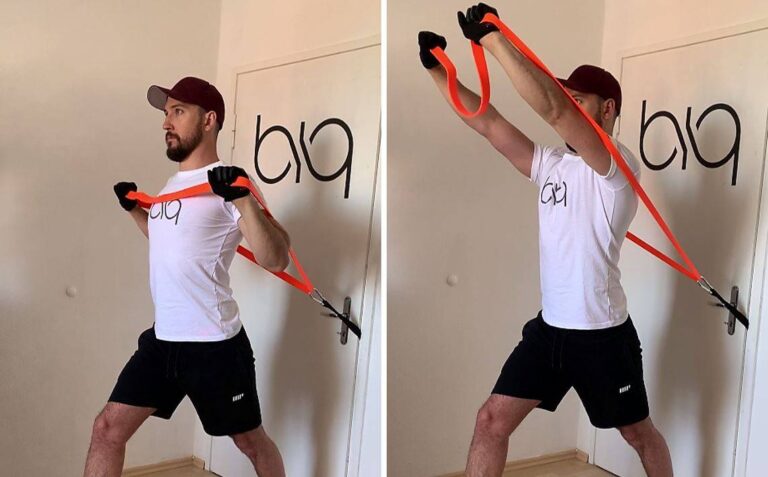Strength Training for Cyclists (Detailed Program)
Reviewed by: Oleksiy Torokhtiy (21 years of Oly Lifting experience)
Cycling is one of the biggest sports in the world, and cyclists are among the athletes with the most healthy hearts. To become the very best, cyclists often engage in several cycling workouts.
One area that’s easy to ignore when training to be a cyclist is strength training. All too often, I see cyclists make this mistake, and it is indeed a mistake. Strength training for cyclists should be an essential part of your routine.
So what is strength training and why is it important for cyclists to bother with it?
Strength training for cyclists involves workouts to train your core and build muscle mass and strength. It’s important because it helps to enhance your athletic output and reduces the risk of injury, among other benefits.

What’s Strength Training for Cyclists?
Strength or weight training for cyclists is an important part of your development as a cyclist and must not be ignored. It involves doing workouts that build your muscle mass, strength, and recovery.
Strength training encompasses many different routines that train different muscles in different parts of your body to give your body the proper balance in all that strength.
As important as strength training is for cyclists, some people ignore it. They would rather spend more time doing cardio workouts or actually cycling.
Strength training is not a trivial matter for any athlete, however, and cyclists are not exception. To help convince you, here are some benefits of strength exercises for cycling.
Benefits of Strength Training for Cyclists
Improved Endurance
Most cycling competitions involve long distances, and I’m talking tens of kilometers at a time. In such races, it’s easy to start full of energy and fervor yet fade out deep into the race. The only way to avoid this is to build up your endurance levels, and strength training helps you do that.
Strength exercises train your muscles to ensure heavy load for extended periods of time. By building your muscle strength, you’re increasing the amount of time they can stay active. This extra endurance could be the difference between you and your competition the next time you’re in a race.
Improved Cycling Economy
To the nerds, the cycling economy refers to the amount of power generated for a given metabolic cost. In simpler terms, it refers to how much effort you must put in to get a level of output.
As a cyclist, your cycling economy is one of the most important metrics to improve. The less effort you put in to get your desired output, the less tired you’ll get. So the better your cycling economy, the more you’ll pull away from the rest because your effort is giving you more output.
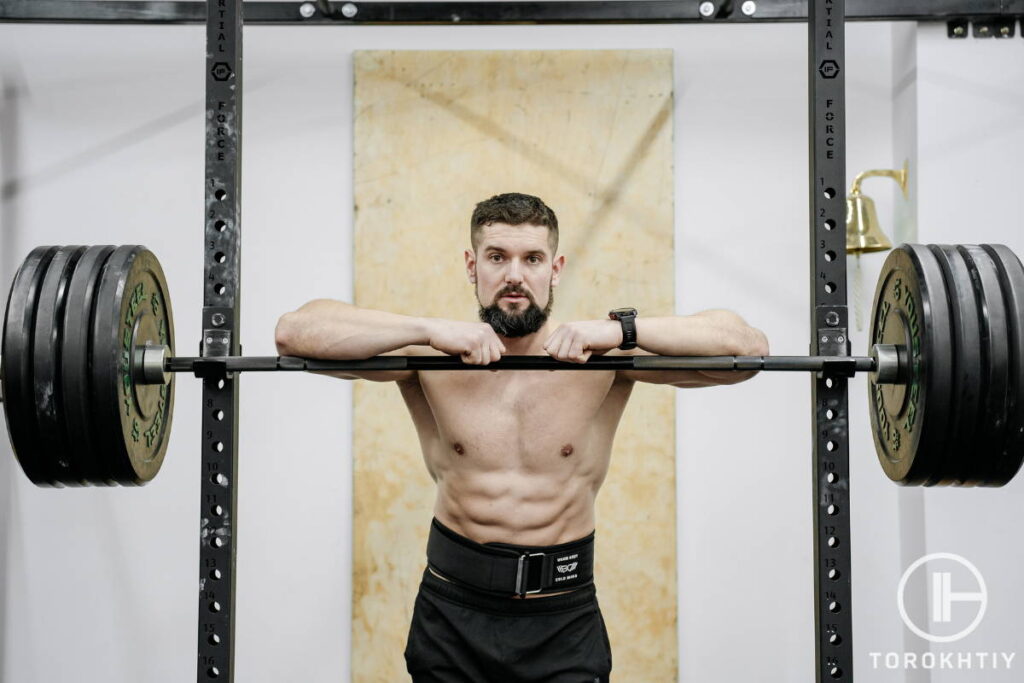
Weight training for biking helps to train your muscles by applying stress on them. The first time you lift a 200 pound barbell, it’ll probably feel like the weight of the world is in your hands.
If you lift that same barbell regularly for two months, you’ll find it won’t weigh as much as it did the first time you lifted it. That’s because you no longer have to put in as much effort as you used to. It’s not lighter, you’re stronger. Get it yet?
Enhanced Coordination
Cycling is all about muscle coordination because you’re using all four of your limbs at the same time. Your pedaling legs and your steering hands must always be in sync or you risk running into trouble. This is another benefit of strength training for you as a cyclist.
Strength training routines such as cleans and overhead movements are complex moves that train your limbs to work together in sync. The more you train your body in this, the better your muscle coordination. After a while, it’ll become an involuntary movement. You won’t even have to think about it.
Reduced Risk of Injury
As important as muscle recovery is, it’s often criminally ignored. Without proper muscle recovery, however, your body is bound to give in to the continuous strain you’re subjecting it to.
This opens you up to all sorts of muscle injuries that could be extremely frustrating, especially if you’re a competing cyclist.
Strength training helps your muscles recover better, and this in turn reduces the risk of any muscle injuries. You can then push your muscles as far as you want and be sure they’ll recover well.
Increased Athleticism
As a cyclist, athleticism is a goal you must strive to achieve. It means you can move with ease and effectiveness towards achieving your goal. Increased flexibility, enhanced power in your legs, and sharp reactions as you steer are all benefits of athleticism that you can enjoy with the right kind of training.
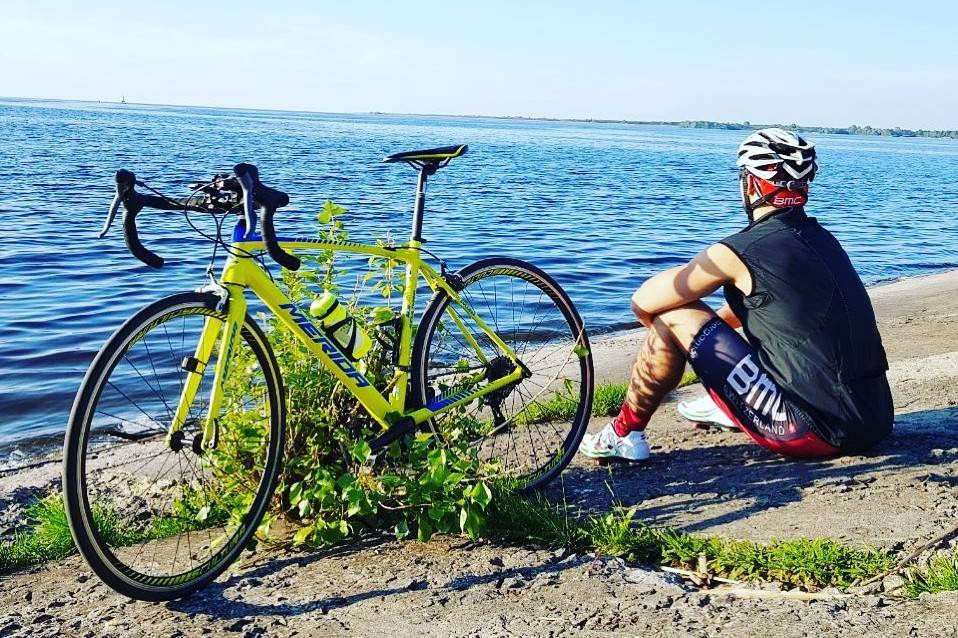
Strength Training Exercises for Cyclists
Now that you know how important strength training is, you might be wondering how to get started. So I’ve arranged a list of seven effective exercises to get you started.
Deadlifts
In terms of raw strength, there are very few workouts as brutal and effective as the deadlift. Often called the king of weight lifting, the deadlift does wonders in muscle mass building and strength development.
As scary and tasking as it sounds, it’s quite simple to learn. Start with the barbell on the floor with your toes just underneath it and spread apart about as wide as your shoulder.
Then bend your knees slightly and grip the barbell. Once your grip is set, pull up until the barbell reaches your lap and you’re standing fully upright. Then slowly lower the barbell back to the starting position. You’re to master how to lift and drop this heavy weight while being in control the whole time.
Squats
Perhaps one of the most versatile workouts ever, squats are another leg muscle builder. You can do squats with or without weights, in fact, there are squat variations with all three types of free weights. They help to improve flexibility in your lower body, strengthen your lower back, and tone your core. The basic squat movement starts with you standing upright.
Then while keeping your back straight, bend your knees into a squat, pause at the bottom, before rising back to your standing position. You can vary the movements depending on which weights you’ve decided to use.
Planking Rows
Finally some actual weights! Planking rows is an effective combo workout. It combines weights and a simple move like a plank to give one helluva workout. With a planking row, you’ll enjoy the core strengthening but the row will train your lats and shoulders too.
A planking row starts with you in a plank position with your arms outstretched and gripping a pair of dumbbells. As you plank with the dumbbells, lift one hand up to your chest, then drop back to the ground and repeat the move with your other arm. As you plank, row.
Military Press
Staying with weights, the military press is another ruthless workout that will have you shredded and fit as a buck. You can do the military press with either a barbell or a dumbbell and enjoy superb results. This workout helps to improve your posture and trains your arm, back, and core muscles. If you’d like something more complex, you can attempt a clean and jerk.
Staying with the military press, it starts with you holding the barbell or dumbbell in a racked position, with your back straight and your shoulders bent such that your upper arm is parallel to your side. Then push your weight up until your arms are outstretched. Then come back down and repeat. As easy as it sounds, though, it’s also easy to make mistakes in form, so be careful to nail the correct form.
Barbell Rows
Here’s some more weight lifting for cyclists with the barbell row. It targets the muscles in your upper and mid back, and trains the stabilizing muscles in your shoulder as well. Your glutes and core are also activated due to your bent knee stature, and you can fire up your arm muscles if you use an underhand grip while lifting. It’s also a functional workout as you can apply the training not only in cycling, but in your regular life too.
You can easily learn how to do a barbell row. Once your barbell is loaded up and in position, approach it like you would if it were a deadlift. Using an underhand grip and facing the ground, lift up the barbell until it touches your chest. Pause at the top, then slowly lower the barbell back to starting position.
Key Factors in Cyclists’ Strength Training Program
Specific Weaknesses
When there’s a specific issue you’re trying to handle, it gives you a much clearer idea of what exercises you need. If you’re struggling with balance issues, you already know your core needs work. If you’re getting tired too quickly when riding, you know you need endurance training. So this is one major factor that will influence what workouts you add to your routine.
Upcoming Events
Nothing motivates an athlete to train like a competition, and cyclists are no different. If there are upcoming events you’d like to compete in, it’s a sure motivation to get in the gym because your goal is right in front of you. This will make you pay close attention to your body to understand exactly what you need. Do you need to pedal faster, or do you need to pedal for longer? These are examples of questions you’ll need to ask yourself.
Personal Goals
Another factor that will affect your workout routine and what exercises you do is your own personal goals. What do you want for yourself? Different workouts train different parts of your body, so you’ll have to choose where to focus more on. In the end you’re in charge of your own fitness, so there’s no working out without a personal goal.
Cyclists’ Strength Training Programming
If you’re wondering how exactly to get started, don’t worry. I have a cycling weight training program that will give you an exact routine to follow. I have two options for you:
The first option is a year-long fitness plan for cyclists. It’s great because it lasts the whole year and specifies when you should be in your strengthening phase and when you should be in a maintenance phase. That said, it doesn’t specify exactly what workouts to do, but gives you general suggestions.
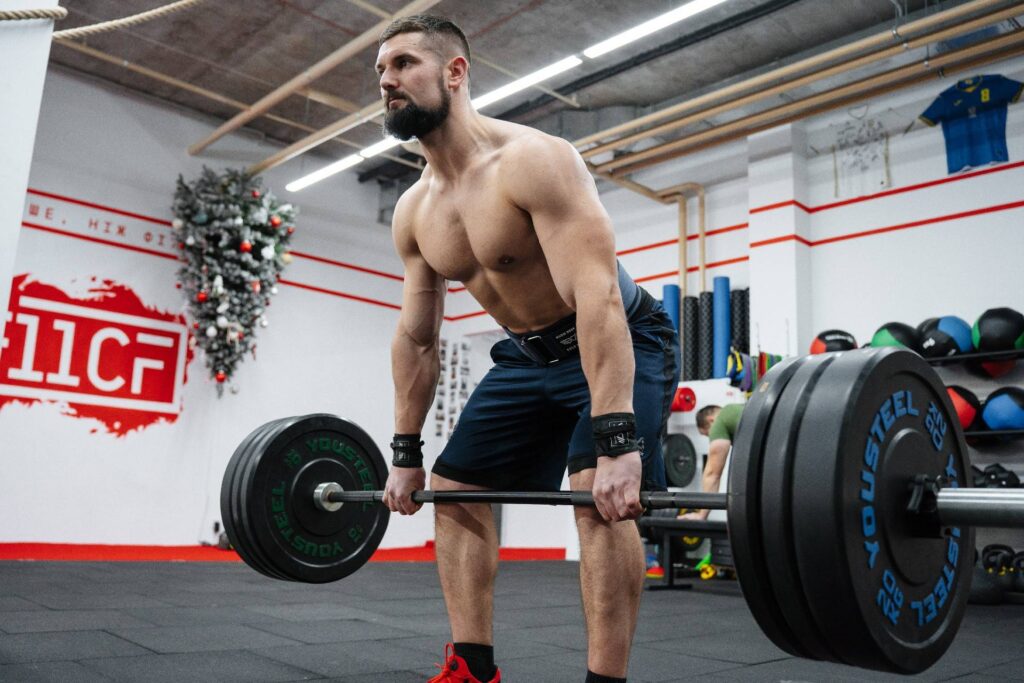
The second cycling strength training program is as exact as you like, with workouts and reps and rest periods all specified. It’s not a year-long plan, though, but a 12-week one.
So if you’d like to take charge of your own workouts with a guiding light for a whole year, here’s the first option. If you’re after something more specific and short term, here’s the second option.
Basic Equipment You Need
Exercise Ball
Also known as Swiss balls, exercise balls are awesome for helping you build balance and stability. With its unstable form, it’ll activate your body’s stabilizing muscles and core. The soft and low impact nature of the exercise ball makes it excellent for warm up and rehabilitation. It’s also great for your spine and you can do a great number of workouts with the Swiss ball.
Swiss balls are also quite fun to workout with and they come in different sizes to cater to all your needs. It’s a great piece of equipment to use when recovering from an arduous race.
Free Weights
This one’s obvious, isn’t it? There can be no weight lifting for cyclists without actual weights. Free weights are an absolute imperative in your gym if you’re to do any weightlifting. There are some workouts which don’t require weights such as spiderman push-ups, but the bulk of weight training movements require free weights. There are three different types for you to pick from, each with their own perks and specialties.
A barbell is for heavy lifting to build strength, a dumbbell is for single hand lifting to help you target specific issues, and a kettlebell is for swinging to build power in your arms.

Weight Bench
A weight bench is another staple of the gym and you’ll need one if you’re to enjoy your strength training experience. The main workout done on the weight bench is the bench press, but you can also use it for other workouts. I especially enjoy using it because it helps me keep my back in proper form while I lift. This means I can stop worrying about form and focus on lifting.
Because it frees you up to focus on lifting, you’re able to perform more complex movements. It really is a simple but powerful piece of gym equipment.
Resistance Bands
If you want a more portable version of free weights, resistance bands can help you out. Although they don’t look nearly as impressive as free weights, they can be just as effective. The main advantage of resistance bands is you can take them with you anywhere, so even if you have to travel you can take a mini gym with you. That aside, resistance bands are also quite effective for strength training. There are several resistance band exercises that will help build that muscle strength.
Suspension Trainer
I know what you’re thinking, you don’t want to be a gymnast, and I get it. A suspension trainer, however, is not only for gymnasts, but for every athlete looking to develop aerobic ability, core strength, endurance, and power among others. I really like the suspension trainer because you can also use it for many workouts. It’s a versatile piece of equipment, and that’s what you want to go for when your options are limited.
The alternative machine to go for is a power rack. That’s another versatile piece of equipment that will allow you to do many effective workouts. If you can, get both.
FAQ
What Lifts Are Best for Cyclists?
I’ve already listed out strength training exercises that are awesome for cyclists of different experience levels. To recap, you can do deadlifts, squats, planking rows, military presses, and barbell rows, among many options.
Does Weightlifting Help Cyclists?
Absolutely, yes! You can find more details of how beneficial weightlifting is to cyclists, but here’s a short recap. Weightlifting helps you improve your endurance, cycling economy, coordination, and it reduces your chances of injury.
How Often Should a Cyclist Lift Weights?
This will mostly depend on your personal situation, but here’s a general routine. In the off season, train more intensively so you only need to maintain your levels during the season. Thrice a week is okay for the off season, and once a week during the season is enough to maintain your fitness levels. Again, this is not a rule.
Conclusion
Now you know cycling and weight lifting are meant to be paired. You’ve also learned some workouts to add to your routine, and I’ve even suggested a complete cycling strength training program for you to follow. Remember, train harder in the off-season so that you only need to maintain your level with occasional sessions. This will allow you to focus more on actually cycling.
That’s it from me this time. Did you enjoy it or learn anything new? Which of the workouts or equipment stood out to you the most? Let me know in the comments.
Also read:
- Strength Training for Boxers
- Weight Training for Soccer Players
- Basketball Lifting Workout
- Strength Training for Sprinters
- Weight Workouts for Swimmers
- Firefighter Exercise
- Kayak Strength Training
References:
- How to Do a Military Press With Perfect Form // Men’s Health: https://www.menshealth.com/fitness/a25333223/military-press-form/
- 12 week strength program for cyclists // Rraining4cyclists: https://www.training4cyclists.com/12-week-strength-program-for-cyclists/
- Your Year-Round Strength Training Routine // Bicycling: https://www.bicycling.com/training/a20043127/your-year-round-strength-training-routine/
- Swiss Ball Exercises To Target Abs & Improve Full-Body Strength // Men’s Fitness: https://mensfitness.co.uk/workouts/swiss-ball-exercises/
- 56 Resistance Band Moves You Can Do at Home // Men’s Health: https://www.menshealth.com/fitness/a32093962/resistance-band-workouts/
Why Trust Us?
With over 20 years in Olympic Weightlifting, our team does its best to provide the audience with ultimate support and meet the needs and requirements of advanced athletes and professional lifters, as well as people who strive to open new opportunities and develop their physical capabilities with us.
By trusting the recommendations of our certified experts in coaching, nutrition, dietology, and sports training programming, as well as scientific consultants, and physiotherapists, we provide you with thorough, well-considered, and scientifically proven content. All the information given in the articles concerning workout programming, separate exercises, and athletic performance, in general, is based on verified data. We ensure that you can rely on our professionals’ pieces of advice and recommendations that can be treated as personalized ones which will benefit you and fully meet your needs.
The product testing process is described in more detail here
Author: Sergii Putsov
Head of Sport Science, PhD
Best Results: Snatch – 165 kg,
C&J – 200 kg
Sergii Putsov, Ph.D., is a former professional weightlifter and National team member, achieving multiple medals in the 94 kg weight category at national competitions. With a Master’s degree in “Olympic & Professional Sport Training” and a Sport Science Ph.D. from the International Olympic Academy, Greece, Sergii now leads as the Head of Sport Science. He specializes in designing training programs, writing insightful blog articles, providing live commentary at international weightlifting events, and conducting educational seminars worldwide alongside Olympic weightlifting expert Oleksiy Torokhtiy.
Reviewed by: Oleksiy Torokhtiy
Olympic Weightlifting Champion
Best Results: Snatch – 200 kg,
C&J – 240 kg
Oleksiy Torokhtiy is a professional athlete boasting 20 years of experience in Olympic weightlifting. With multiple European and World titles under his belt, he has showcased his prowess in two Olympic Games (Beijing 2008 and London 2012). Upon concluding his illustrious career, Oleksiy dedicated himself to coaching. By 2022, he had conducted over 200 weightlifting seminars worldwide. He is the visionary behind an international sportswear and accessories brand known for its motto, “Warm Body Cold Mind.” Additionally, he is an esteemed author and the creator of a series of training programs and eBooks.

